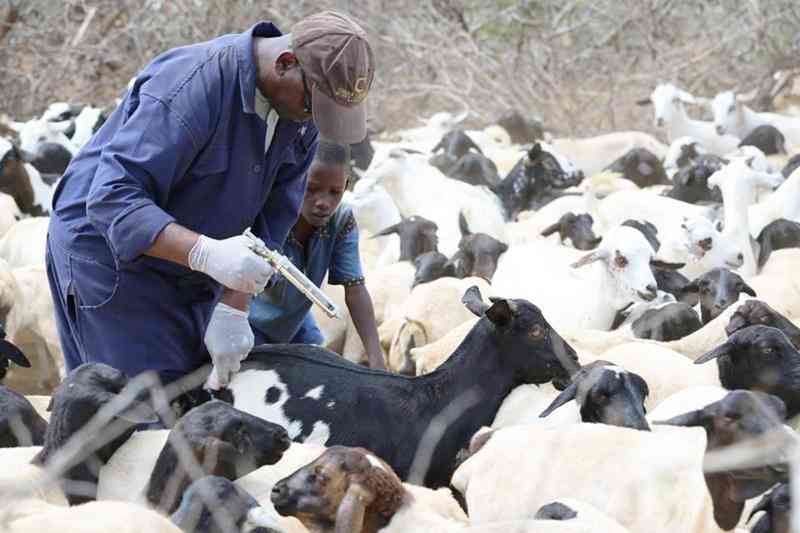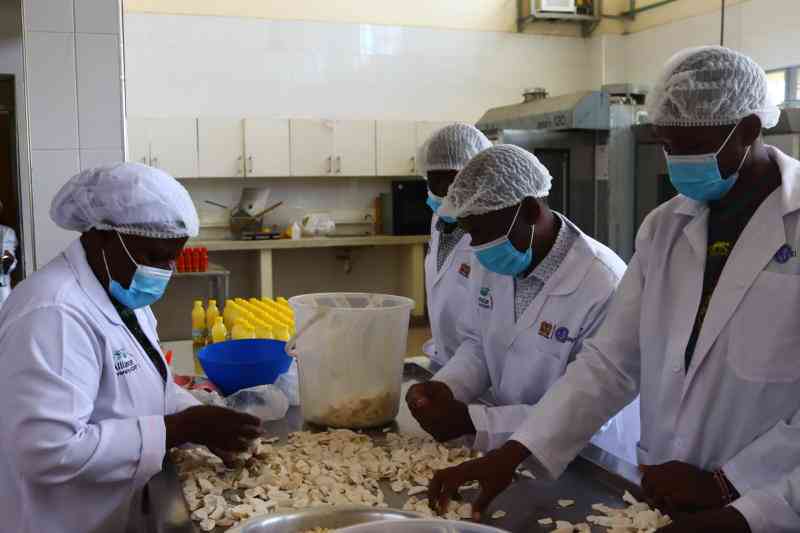
Hi George. I saw your article on exports and French Beans on your website and I have an inquiry. I am a farmer growing French Beans in Kirinyaga. What can I use/spray to control white flies, bean flies and thrips in my French beans farm?
Alfred.
Thanks Alfred for your question. French beans or green beans are one of the simplest vegetables to grow because they produce with minimal care. However, the crop is occasionally attacked by insect pests. Like in your case, aphids, white flies and thrips are the common pests for this crop.
White flies are tiny white flying insects that collect on the undersides of green bean leaves. They pierce and suck sap form the leaves leaving spots, yellowing of leaves and stunted growth. White flies attack may go unnoticed when populations are low.
The easiest way of identifying the insects is by gently shaking the plant. You will notice that they rise in a cloud above the plant. Because white flies deposit honey due on the leaves, they attract ants which in turn protect the white flies from natural enemies. For this reason, elimination of ants is critical for effective control white flies.
Use of baits and traps
Use of baits and traps is effective in controlling the white flies without harming the beneficial insects. Parasitic wasps are very important for control of white flies. For severe attacked farms, remove white flies by clipping off severely infested leaves and disposing of them. Use of yellow sticky traps may also help. Place the traps near the leaves for good results at least 4 traps per 300m2.
Whenever necessary, spray crop with neem products.
Neem-based pesticides inhibit growth and development of immature stages, and reduce egg laying by adult white flies.
Use of insecticides
Use of insecticides is not effective because it kills the beneficial insects the control white flies population. Once the beneficial insects are destroyed through the use of insecticides, it is almost impossible to control whitefly populations on French beans. The control measures listed above are only justified if large whitefly numbers attack the plants during the early stages of the crop.
Because whitefly infestations after the onset of flowering usually do not affect yield, to prevent subsequent attack, keep the field free of weeds throughout the cropping season as they act as alternate hosts for white flies.
Bean fly
The bean flies pierce the young leaves and suck sap from the plant through the openings.
The first signs of infestation are characterised by the presence of yellow spots on the leaves. The maggots then mine their way from the leaves down to the base of the stem, where they complete their development. Maggot feeding destroys the tissue causing the stem to swell and split and reducing formation of lateral roots. Attacked plants produce adventitious roots in compensation. Maggots (yellow) and pupae (brown or black) can often be seen through the stem splits. Young seedlings and plants under stress wilt and die when attacked by bean flies. Older or vigorous plants may tolerate bean fly attack, but their growth will be stunted and their yield reduced. Damage is more severe in plants growing under poor conditions such as infertile soils and drought.
Early planting
Early planting as a practice has been reported to be effective in controlling bean fly. This is because bean fly numbers tend to be low during the early stages of the growing season and increase with time.
It has been shown that frequent foliar application with neem extract gives satisfactory control of this pest. Avoid planting beans near cowpea, soybean and many other leguminous crops, that may be the source of bean flies. Remove and destroy crop residues and all plant parts with symptoms of damage by bean flies. Use the following chemicals: Diazinon based products (such as Diazol EC, Domain) at a rate of 40mls/20L of water. Acephate based products (such as ACE WSP, ASATAF) at a rate of 10mls/20L of water.
Thrips
Thrips are small and hard to notice insects that suck the juices from bean plants. If they attack the crop at flowering stage, the beans may fail to pollinate or result in deformed pods. Heavy infestations lead to flower and flower bud abortion while leaves fall off. Spray with Imidacloprid-based products such as Confidor 200SL, Imaxi 200SC, TATA MIDA 200SL at a rate of 10mls/20L of water. Spray with Deltamethrin based products such as Atom 2.5EC, Decis 2.5EC, Farm-X etc. at a rate 10ml-15ml/20L of water. Spray with Lambda Cyhalothrin (such as Karate2.5 per cent WG at 20gms/20L of water, Tata Umeme 2.5 EC at 15-20ml/20L of water.
[The writer is an expert on sustainable agriculture]
Want to get latest farming tips and videos?
Join Us
 The Standard Group Plc is a multi-media organization
with investments in media platforms spanning newspaper print operations,
television, radio broadcasting, digital and online services. The Standard Group
is recognized as a leading multi-media house in Kenya with a key influence in
matters of national and international interest.
The Standard Group Plc is a multi-media organization
with investments in media platforms spanning newspaper print operations,
television, radio broadcasting, digital and online services. The Standard Group
is recognized as a leading multi-media house in Kenya with a key influence in
matters of national and international interest.
 The Standard Group Plc is a multi-media organization
with investments in media platforms spanning newspaper print operations,
television, radio broadcasting, digital and online services. The Standard Group
is recognized as a leading multi-media house in Kenya with a key influence in
matters of national and international interest.
The Standard Group Plc is a multi-media organization
with investments in media platforms spanning newspaper print operations,
television, radio broadcasting, digital and online services. The Standard Group
is recognized as a leading multi-media house in Kenya with a key influence in
matters of national and international interest.







